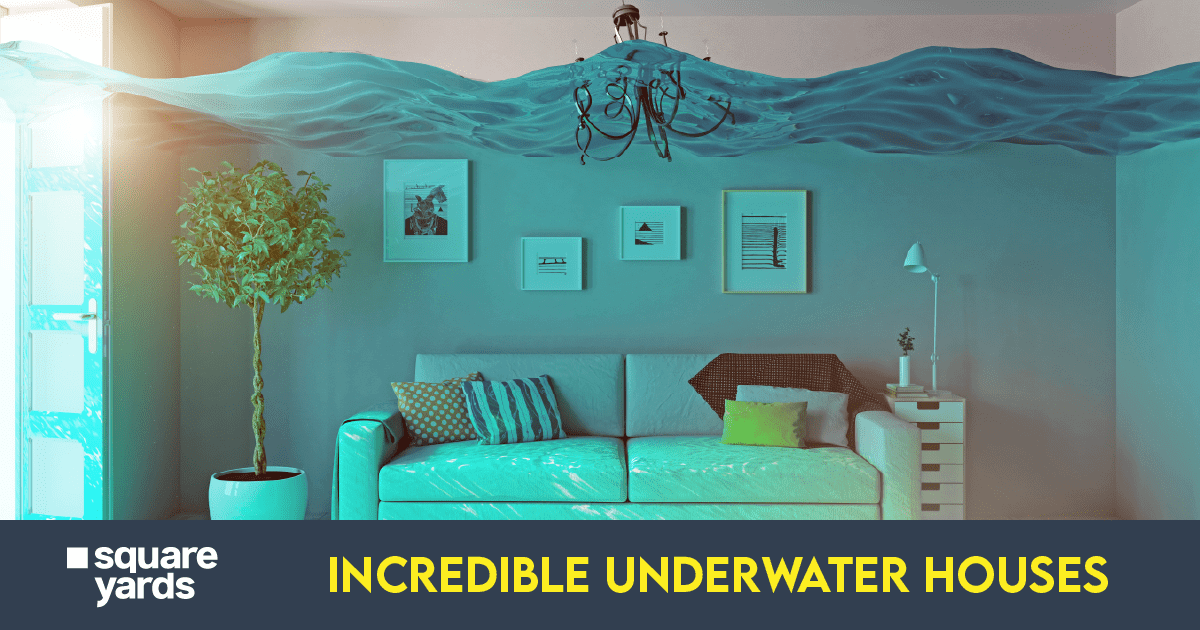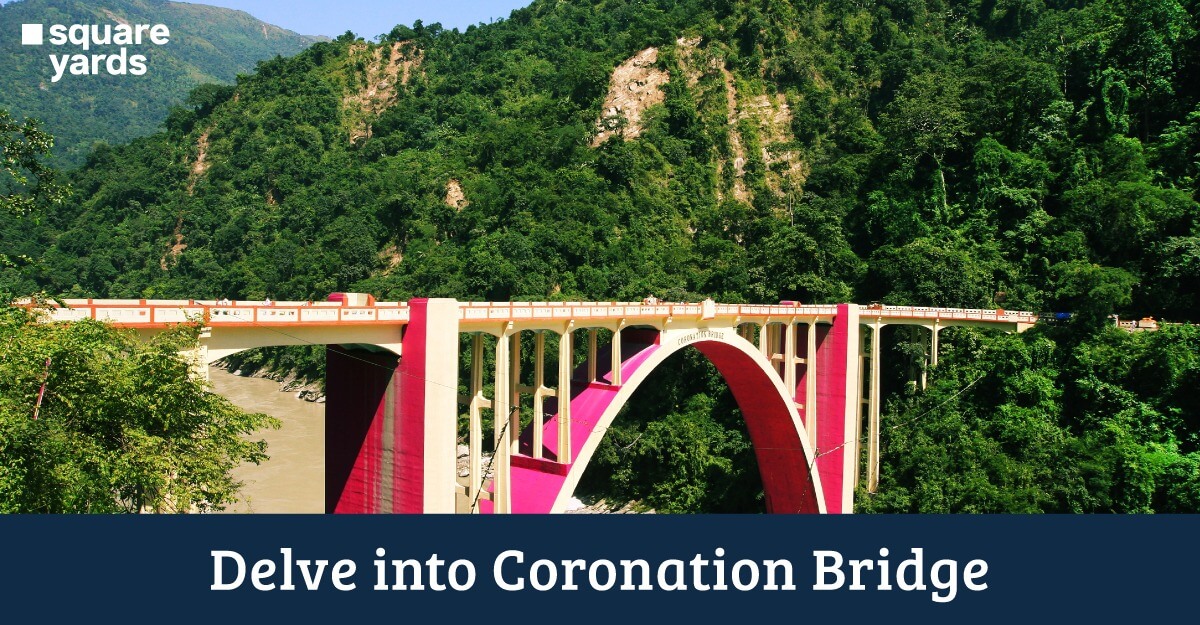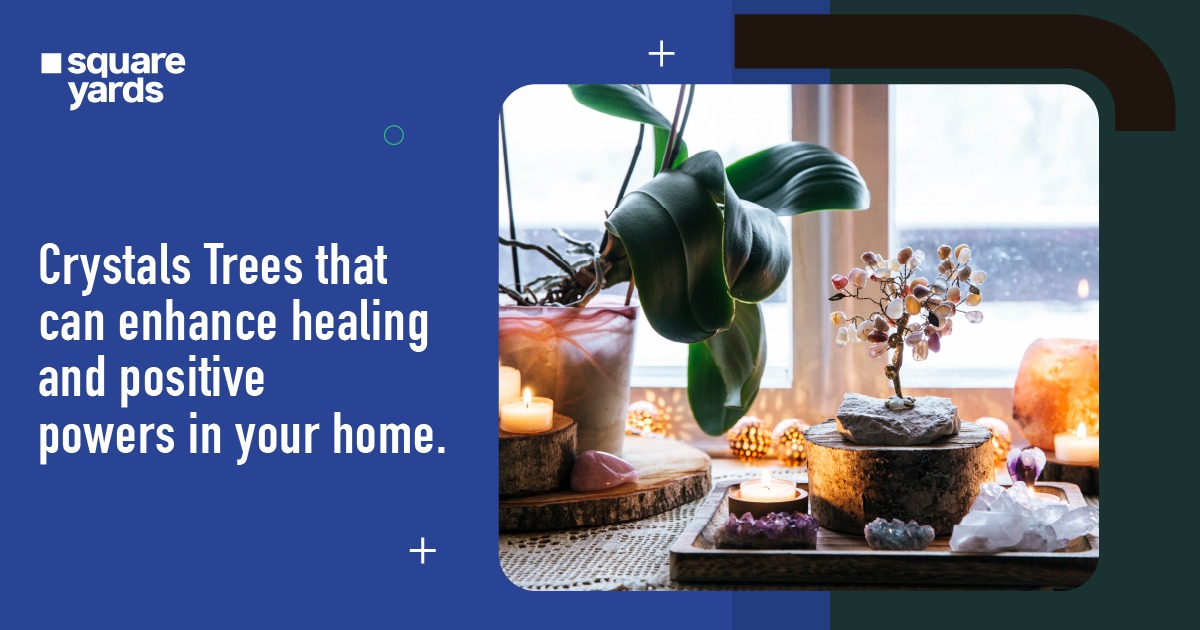A time when bullock carts were scarce, who would have thought of aeroplanes? Nevertheless, dreams, science, hard work, and inventions have led to a time when we can even live safely in underwater houses while enjoying the marine environment. Although it may seem impossible, there are several underwater restaurants and houses that are perfectly preserved and offer an exceptional experience of living under the water. The underwater houses provide an opportunity to experience aqua beauty while carrying out the most basic human functions 24 hours a day, such as eating, resting, working, sleeping, and attending to personal hygiene.
Let’s go deep and take a quick virtual tour of some of the world’s best-built underwater properties!
Incredible Underwater Hideouts You Won’t Believe
People in the real world are dreaming about living at the bottom of the sea, and those dreams could soon come true. Below we have splashed a few underwater properties that are serving their best beyond the zest.
Karine Rousseau
There are various proposals, so to speak, for populating the waters, such as opulent hotels and eateries, roving research submarine fleets, and domestic pods with fish-side vistas. According to architect Michael Schutte, starting construction below the waterline makes sense given that many individuals are willing to spend more for a waterfront home. It is a docking station for a submarine to take guests to observe coral reefs or perhaps construct an underwater cocktail bar.
Rex Features
But is anyone still living underwater today, aside from submarine crews? The aquanauts—that’s the answer.
Florida International University runs Aquarius Reef Base, which is a research facility permanently situated 20 metres below the surface of the water just above the seabed in the Florida Keys National Marine Sanctuary.
Mark Widick
This interaction with the outside world is kept up by the internal air pressure, which also prevents the deluge of water that would otherwise come in. Your squeaky voice is the first thing that you’ll notice once you’re inside. Your vocal cords might struggle to cope with air that is 2.5 times denser than usual.
You can put away your dive gear, and take a freshwater shower (salt, which promotes corrosion, is dangerous to Aquarius’ internal organs). You then wrap yourself in a towel and go straight to a window to look outside. There you’ll be enthralled by the fish swaying across the waters of the sunlit sea.
“The fish are observing you inside the tank.”
You can anticipate finding it difficult to draw yourself away from this magnificent place in a matter of minutes. Aquarius is prevented from floating up by a base plate weighing more than 100 tonnes, and air, power, wi-fi, and mobile phone signals are delivered from the surface to the depths via a thick cable.
Helen Scales
Together, the living quarters and research lab take up an area roughly the size and shape of an American school bus. This long tube-like structure is the most effective shape for withstanding the pressure of 20 metres of water pressing down on it, aside from a sphere.
There is a restroom with a shower curtain that may be pulled aside for a flimsy sense of privacy (all the waste from Aquarius is collected and taken back up to land for disposal).
In a small galley with boiling water available from the tap and a microwave, food is cooked, primarily dehydrated camping meals. Six-person bunks with an escape hatch and extra diving tanks hidden beneath the floor are located at the far end.
As the fish soothe you to sleep, you would have delighted to stretch out on a bunk and dive whenever you feel like it. After one hour, though, You had to put on your dive gear again and swim to the surface, halting just for three minutes to allow your body to adjust to the shifting pressure.
FIU
Aquanauts must go through more steps to leave Aquarius. Their bodies have already adapted to the compressed air after a few hours underwater, so they must gently adjust to life above the water.
Over the course of 17 hours, the pressure inside the hatches is reduced; if this process were to proceed any quicker, nitrogen bubbles could form in the aquanauts’ blood, simulating the popping of a champagne bottle. The bends, also known as decompression sickness, can have fatal and disabling symptoms.
Aquarius is swiftly pressurised once the aquanauts are back at atmospheric pressure, the wet porch is closed, and the divers can swim back up.
Living underwater has many advantages for scientists. Aquanauts can dive for up to nine hours a day at depths of 20 metres or deeper. Surface dwellers can only stay for an hour at a time.
Conard Hotel and Resorts
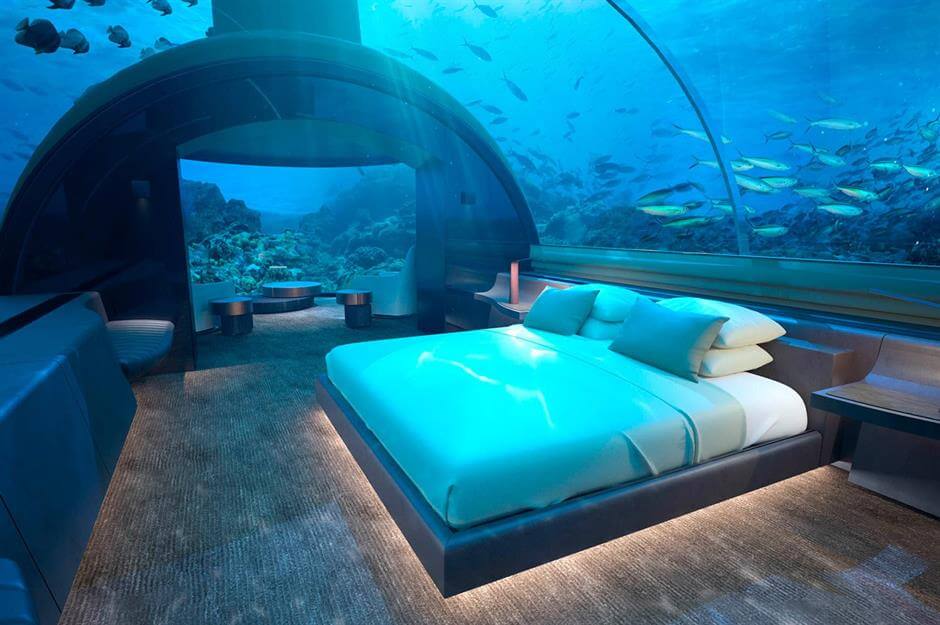
Diving underwater isn’t just about seeing shells and fish; you can also find some surprising homes beneath the surface. Mixing breathtaking vistas of coral reefs and beautiful ocean creatures with luxury living, let’s dip into the world’s most beautiful underwater properties.
Jelly-fish 45
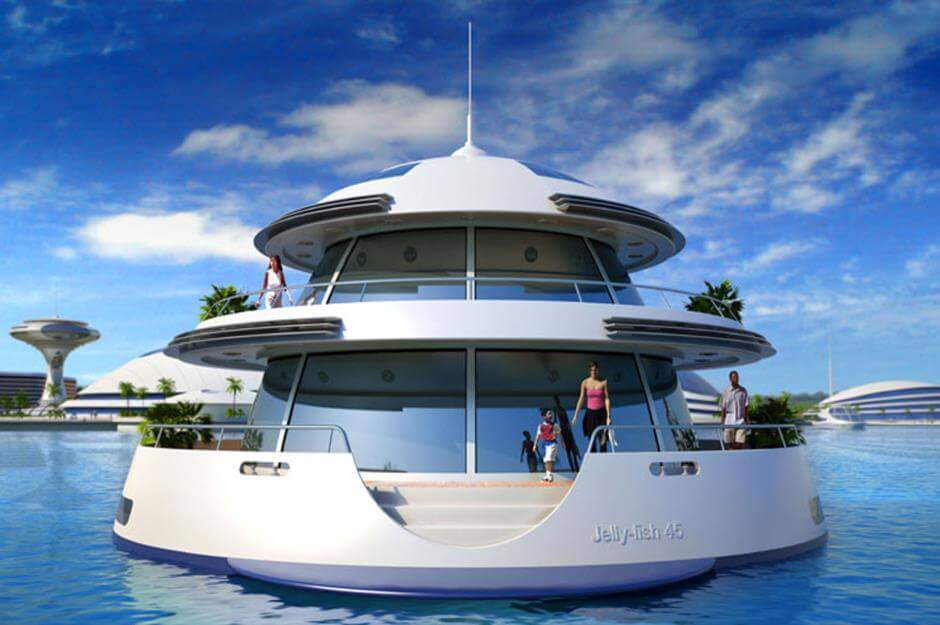
Giancarlo Zema, an architect, is the designer of this rounded, partially submerged residence. The building has four floors, including one below the waves, and is large enough for six people. Its design was inspired by the shape and movement of jellyfish.
The Jelly-fish 45 can be reached by jetty or boat and is best suited for warm, shallow seas with an abundance of fascinating marine life. The prototype models for the project will be placed in Doha, Qatar.
A spectacular spiral staircase connects the four levels. The undersea level of the house houses the ocean-level viewing room, and the top three storeys house a study room, a kitchen, living areas, and bedrooms.
The Jelly-fish 45, made of strong yet lightweight steel, aluminium, and extremely resistant polycarbonate, is appropriate for construction in a variety of breathtaking ocean locations around the world, from the Maldives to Mauritius.
In a Nutshell
Above we have had a virtual tour deep underwater where reality comes to the ocean surface, amidst the marine life escaping the hustle and bustle of the mainland. Waking up in the heart of the reef is one of the prettiest dreams one could ever have, but these breathtaking underwater spots have made it possible for you to turn your dream into a reality by experiencing the colourful coral wonderland.
Stories You May Also Like
| Antilia | Mukesh Ambani House |
| Prime Beach | Akshay Kumar House |
| Freeda Apartments | Aamir Khan House |
| Mont Blanc Apartments | Sushant Singh Rajput House |
| Blessing | Allu Arjun House |
| Jubilee hills | Mahesh Babu House |
| Madhuri Dixit House | Madhuri Dixit House |
| Colaba Mumbai | Ratan Tata House |
| Omkar 1973 building | Yuvraj Singh House |
| A Villa in the Sky | John Abraham House |
Frequently Asked Questions
What city is underwater?
Port Royal, Jamaica, is one of the few perfectly preserved underwater cities, with just a few things removed.
Can I live in an underwater house?
Yes, living in an underwater house is actually possible. Though it’s a crazy human idea to live in underwater houses, you could be moving to an underwater house in the near future.
Are there any underwater hotels?
The Palm in Dubai and the underwater suites in Atlantis named ‘Poseidon’ and ‘Neptune’ are really dreamy underwater stay-cations for anyone. Both stays offer you more romantic and intimate lodging than you could ever imagine.
Which cities have gone underwater?
There are a lot of towns and cities gone beneath the surface of the water, such as Villa Epecuén, Argentina, Derwent, England, Baiae, Italy, and Thonis-Heracleion, Egypt.
Who built the world’s first underwater house?
In place of his aspirations, architect Ahmed Saleem settled in 2005 to open Ithaa, the world’s first underwater restaurant, at the Conrad Maldives Rangali Island resort.


